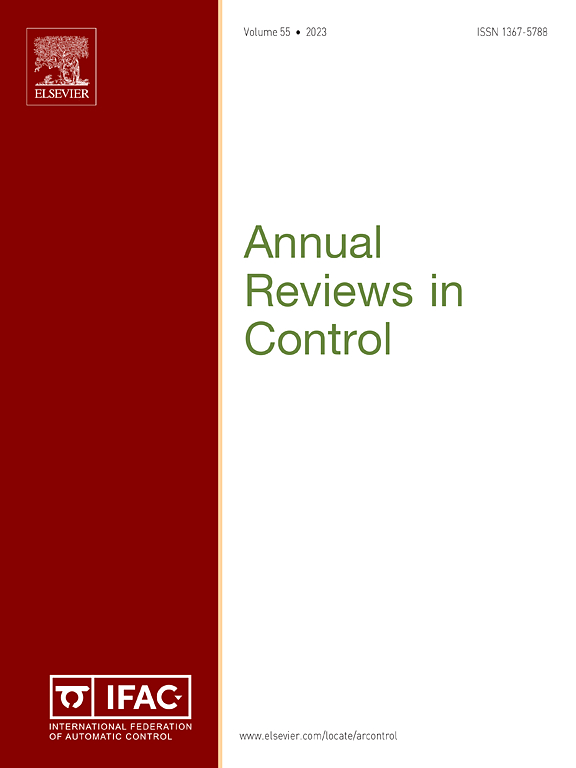可穿戴机器人中的仿生控制策略:cpg和dmp的综合综述
IF 10.7
2区 计算机科学
Q1 AUTOMATION & CONTROL SYSTEMS
引用次数: 0
摘要
在过去的二十年里,外骨骼和矫形器等可穿戴机器人设备取得了重大进展,旨在支持人类在康复、日常生活和工业环境中的移动能力。其有效性的核心是控制策略的实施,产生平滑,自适应和用户同步的运动。其中,模仿人类运动的神经和运动机制的生物启发方法已获得越来越多的关注。本文综述了在可穿戴下肢机器人系统中实现的两个突出的仿生控制框架-中央模式发生器(CPGs)和动态运动原语(dmp)的综合分析。共系统分析了45篇文章,以确定其应用中的趋势和挑战。本文考察了这些控制器的用途、关节和自由度、所采用的传感器、每种方法的结构特征、感官反馈和意图解码的集成、所使用的跟踪控制器以及所采用的验证方法。研究结果表明,cpg和dmp主要用于产生自适应关节轨迹,从而实现稳定、有节奏和响应性的运动。它们的灵活性允许对运动模式进行编码,以适应特定于用户和特定于任务的需求。然而,诸如参数调整、感官反馈集成、实时意图解码和验证鲁棒性等挑战仍然存在。这项工作强调了基于CPG和dmp的策略在增强可穿戴机器人的自主性、安全性和个性化方面的潜力,并提供了未来的研究方向,以解决它们目前的局限性并提高它们的实际适用性。本文章由计算机程序翻译,如有差异,请以英文原文为准。
Bio-inspired control strategies in wearable robotics: A comprehensive review of CPGs and DMPs
Wearable robotic devices such as exoskeletons and orthoses have undergone significant advancements over the past two decades, aiming to support human mobility in rehabilitation, daily life, and industrial settings. Central to their effectiveness is the implementation of control strategies that generate smooth, adaptive, and user-synchronized movements. Among these, bio-inspired approaches that emulate neural and motor mechanisms of human locomotion have gained increasing attention.
This review presents a comprehensive analysis of two prominent bio-inspired control frameworks – Central Pattern Generators (CPGs) and Dynamic Movement Primitives (DMPs) – implemented in wearable lower-limb robotic systems. A total of 45 articles were systematically analysed to identify trends and challenges in their application.
The review examines the purposes of these controllers, the joints and degrees of freedom addressed, the sensors employed, the structural characteristics of each approach, the integration of sensory feedback and intention decoding, the tracking controllers used, and the validation methodologies adopted.
The findings reveal that CPGs and DMPs are primarily adopted for generating adaptive joint trajectories, enabling stable, rhythmic, and responsive locomotion. Their flexibility allows for encoding motion patterns that adapt to user-specific and task-specific requirements. However, challenges such as parameter tuning, integration of sensory feedback, real-time intention decoding, and validation robustness remain open issues.
This work highlights the potential of CPG- and DMP-based strategies to enhance the autonomy, safety, and personalization of wearable robots and provides future research directions to address their current limitations and improve their practical applicability.
求助全文
通过发布文献求助,成功后即可免费获取论文全文。
去求助
来源期刊

Annual Reviews in Control
工程技术-自动化与控制系统
CiteScore
19.00
自引率
2.10%
发文量
53
审稿时长
36 days
期刊介绍:
The field of Control is changing very fast now with technology-driven “societal grand challenges” and with the deployment of new digital technologies. The aim of Annual Reviews in Control is to provide comprehensive and visionary views of the field of Control, by publishing the following types of review articles:
Survey Article: Review papers on main methodologies or technical advances adding considerable technical value to the state of the art. Note that papers which purely rely on mechanistic searches and lack comprehensive analysis providing a clear contribution to the field will be rejected.
Vision Article: Cutting-edge and emerging topics with visionary perspective on the future of the field or how it will bridge multiple disciplines, and
Tutorial research Article: Fundamental guides for future studies.
 求助内容:
求助内容: 应助结果提醒方式:
应助结果提醒方式:


